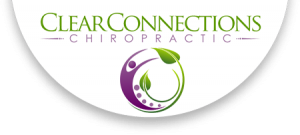We are back to school and this month we are uncovering the data and research behind one of the fastest growing disorders for school age children, ADHD.
Additives and Chemical Preservatives:
ADHD is commonly seen associated with an inflammatory based diet and toxic food additives, dyes and preservatives. These food-industry based chemicals are mild-moderately neurotoxic. They also have a strong synergistic affect when combined with sugars such as fructose.
A recent Lancet study concluded that food dyes along with the preservative sodium benzoate (found in many soft drinks, fruit juices, & salad dressings) cause many children to become significantly more hyperactive and distractible. This study also found that food additives and dyes can do as much damage to children’s brains as lead in gasoline.
Gluten Sensitivity and ADHD:
Gluten is the common protein molecule found in wheat, barley, rye, kamut and spelt. Gluten is a sticky storage protein that binds to the small intestinal wall where it often causes digestive and immune system disorders. There is extensive research about gluten sensitivity and disorders in every part of the neurological system. Gluten is a significant trigger in neurodevelopmental disorders such as ADHD. If you have one of these issues it is critical to go 100% gluten-free.
Anti-Inflammatory Diet:
An anti-inflammatory nutrition plan that is low in carbohydrate and rich in healthy fats and anti-oxidants is critical to preventing and treating ADHD. The proper nutrition plan to beat ADHD is rich in phytonutrient dense vegetables, healthy fat and clean protein sources. Healthy fat sources such as coconut, avocados, olive oil & sprouted nuts and seeds must take a central role in the diet to promote healthy brain function.
Chiropractic and ADHD:
Healthy movement patterns produce proprioception (movement information) which is a critical essential for healthy brain enhancing and neurodevelopmental patterns. Boosting proprioceptive input through good posture and spinal function is critical for healthy brain development. Regular chiropractic care along with spinal hygiene exercises are essential lifestyle factors for healthy neurological function.
Healthy Movement Patterns:
Children, teenagers, & adults with ADHD symptoms do very well with a regular exercise program that incorporates core stability and functional balance training. Many hyperactive kids are naturally drawn to activities such as rebounding and jumping on a trampoline as well as balance sports such as skating, surfing and snowboarding. All of these dynamic balance based activities powerfully enhance proprioceptive input into the brain. Regular movement and daily exercise are also extremely beneficial for people with ADHD.
**Stay tuned because next week we are discussing the 11 tips to beat ADHD NATURALLY!**
